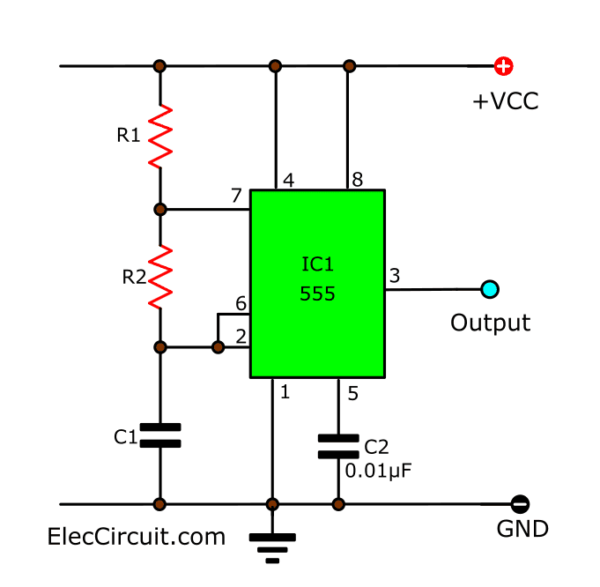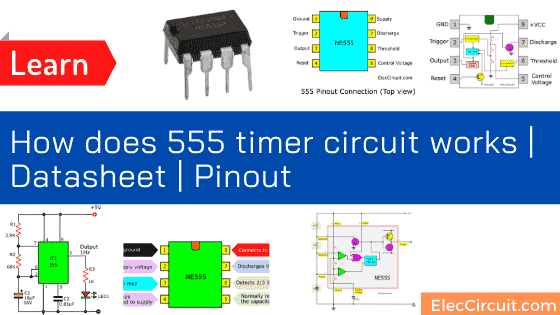

When the output pin is LOW, the discharge pin switches on causing the capacitor to drain to ground.

When the capacitor’s charge reaches two thirds of Vcc+, the output pin is deactivated. With the discharge pin its off state, current is able to flow through the 5.1K ohm resistors which in turn charges our 100uF electrolytic capacitor. Remember, if the trigger pin voltage is LOW, the output is HIGH. When the circuit first receives power, the voltage is LOW at the capacitor, the threshold pin, and the trigger pin. Therefore the the voltage levels will be identical on the trigger pin, threshold pin, and the 100uF capacitor. As you can see in the wiring diagram, both the threshold pin and the trigger pin are connected to the 100uF capacitor. In astable mode, the output PIN cycles form HIGH to LOW continuously. Understanding Astable Mode on the 555 Timer
PIN 8 – Vcc+ Vonnected to the + side of the 9V battery (You can actually use any voltage between 4.5V and 15V to power the 555 in case you’re using a benchtop power supply). PIN 7 – When the output voltage is brought LOW, will discharge the capacitor to ground ( GND). PIN 6 – The threshold brings the output LOW when its voltage is above two-thirds of Vcc+. PIN 3 – Outputs up to 200 mA of current at ~1.5 volts. PIN 2 – The trigger brings the the output HIGH when the voltage supplied to it drops below one-third of Vcc+. PIN 1 – Connected to ground ( GND / Vcc-). To wire up the 555 timer for bistable operation, follow this wiring diagram. In our case we’re going to cause an LED to flash on a repeating interval using astable mode. The values of the resistor and capacitor will determine the timing of this repeatable circuit. Astable mode is the most common mode that you’ll find 555 timers used in. In this mode we can create a circuit with a repeatable action. In Astable the 555 timer uses a resistor and capacitor to create a cycling function. If you use them, it costs you nothing, but we may get a small commission that helps us keep making great content like this. 
Here’s a quick parts list to get you going quickly on building this project: QTY







 0 kommentar(er)
0 kommentar(er)
